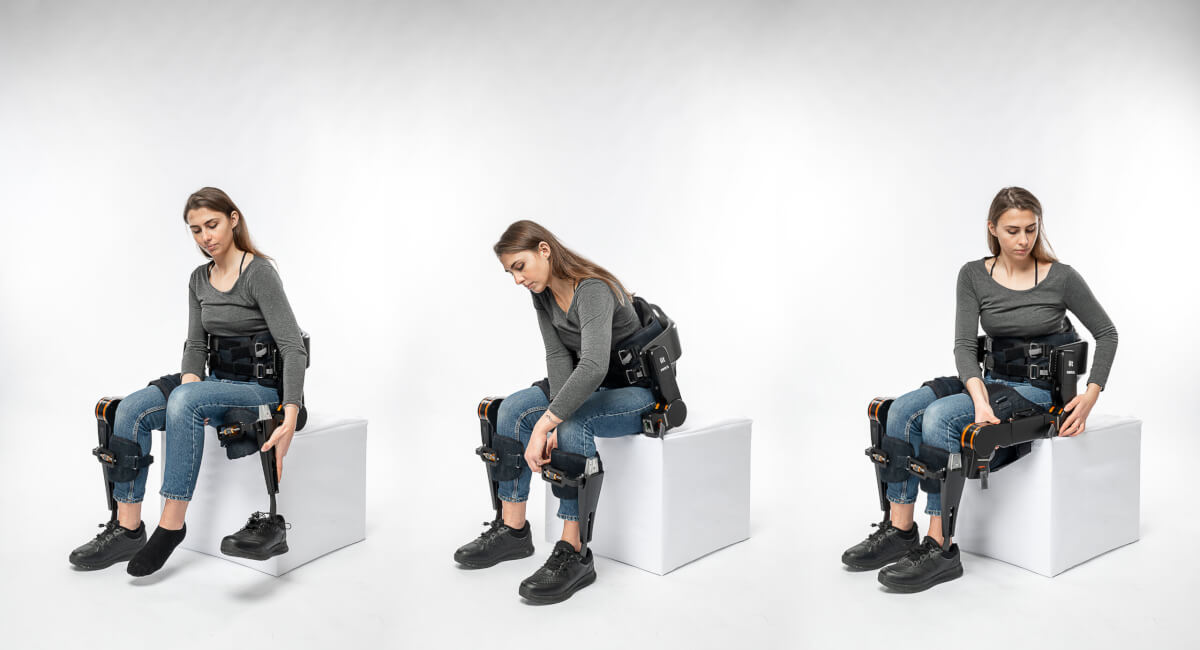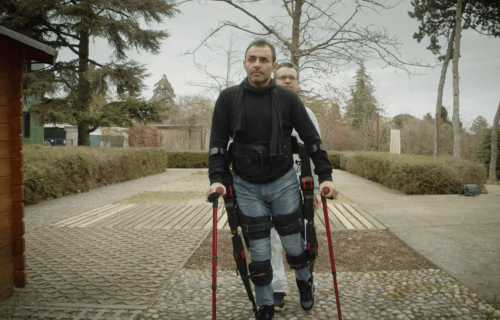MILAN, Italy — In a significant development that’s helping paralyzed people walk again, Italian researchers have unveiled an innovative robotic exoskeleton. Developed by Rehab Technologies IIT–INAIL, a collaboration between the Italian Institute of Technology (IIT) and the National Institute for Insurance against Accidents at Work (INAIL), TWIN is set to redefine the possibilities for patients with lower limb disabilities.
TWIN’s journey from concept to prototype is the result of a cooperative effort between IIT’s Rehab Technologies Lab and INAIL’s Prosthetic Center, under the guidance of coordinator Matteo Laffranchi. The collaboration, which began in late 2013, aimed to create high-tech, cost-effective solutions for individuals facing physical challenges. The project’s success was highlighted by the participation of Alex Santucci, a patient who played a crucial role in the device’s testing phase, offering invaluable insights throughout the development process.
The TWIN exoskeleton is an external, motorized structure designed to empower users with limited or no mobility in their lower limbs, enabling them to stand, walk with the aid of crutches or walkers, and transition between sitting and standing positions. What sets TWIN apart are its lightweight construction from aluminum alloy and its modular design, ensuring ease of use and transport. Additionally, the device can be customized to fit the user’s body through adjustable components, making it suitable for a wide range of patients, regardless of age or gender.

Unique to TWIN are its operating modes, tailored to accommodate various degrees of motor impairment. The “Walk mode” assists those with no motor function, guiding them through a predefined walking pattern. The “Retrain mode” supports patients with partial mobility, helping them achieve a more natural step movement. Lastly, the “TwinCare mode” addresses asymmetrical motor abilities between the limbs, providing differential support as needed.
“Once TWIN is on the market, it can be used by patients in need, reintegrating severely injured workers into social and work environments,” researchers say in a statement.
Controlled through a dedicated Android app, TWIN allows therapists to adjust the exoskeleton’s settings, customizing the walking speed, step length, and movement patterns to each patient’s requirements. This high degree of customization ensures that TWIN is not just a support mechanism but a rehabilitative tool, aiding in the recovery and improvement of motor functions.
The significance of TWIN extends beyond its technological achievements; the device offers profound benefits for users’ overall well-being. Regular use can improve musculoskeletal strength, circulatory health, mental state, and digestive functionality, making it a comprehensive aid for those confined to wheelchairs.
Researchers note “TWIN can be worn daily, even for just a few hours.”
Looking ahead, the team behind TWIN aims to achieve CE marking — meaning that the exosuit meets European Union safety standards. The eventual industrialization and market introduction of TWIN promise to reintegrate individuals with severe injuries into society and the workforce, offering a new lease on life through enhanced mobility and independence.

Remote controlled exoskeletons can be used to control dangerous criminals, too. In fact, they can make them perform ridiculous or repeated behaviors as punishment.